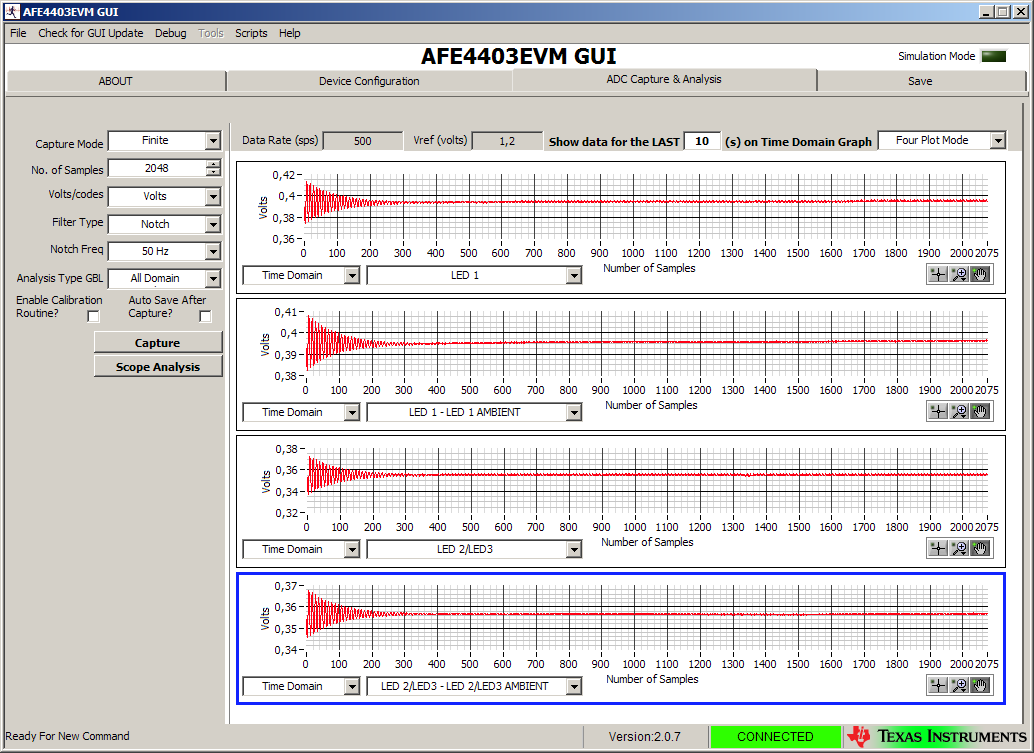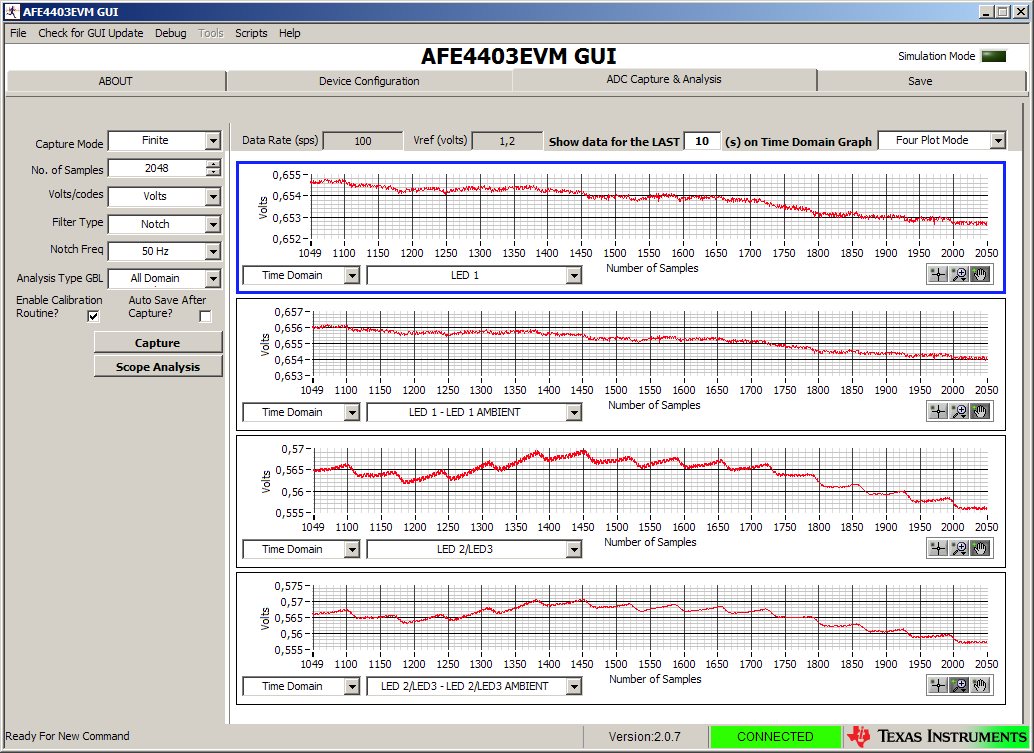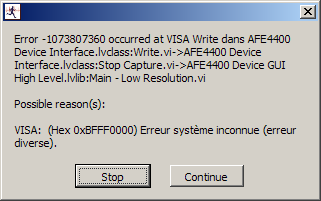Hello,
I am having trouble with the AFE4403-HREVM ("wristwatch") evaluation kit. It has not been modified in any way nor reflashed. The sensor board used is the one that came preinstalled (OSRAM SFH7050). The PC used is an old machine running Windows XP SP3.
Measurements made with TX3 mode disabled are basically flat lines:
Zooming in only show noise:
With TX3 mode enabled, LED 1 signal is still flat. LED 2/LED 3 shows a very weak and noisy signal when zooming:
Running the calibration, when it works, gives a signal that looks more normal but still is pretty weak:
However, most of the time, the calibration fails after a few seconds with these error messages:
Things I've tried:
- enabling/disabling the notch filter: no improvement
- setting the wristwatch power switch to on: the calibration seems to crash less often if the power switch is on
Is there anything wrong with the hardware or the way I'm using it?








